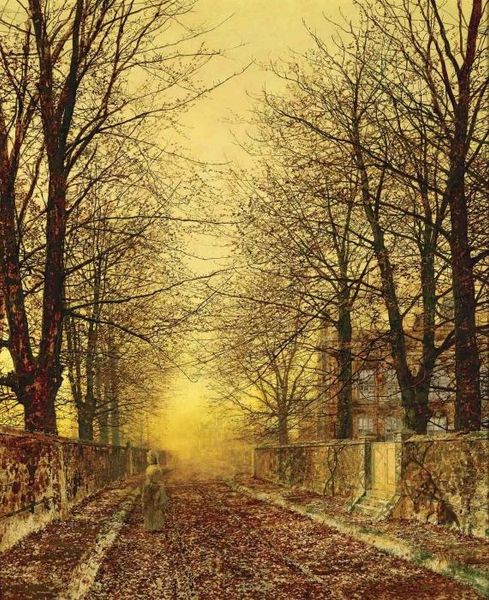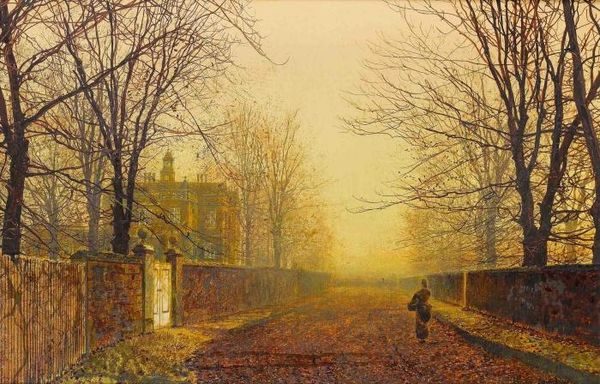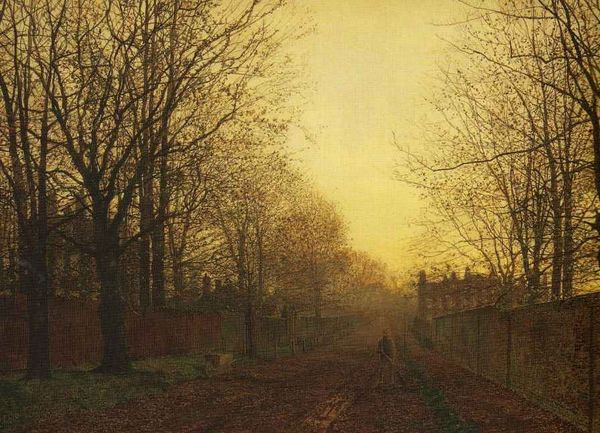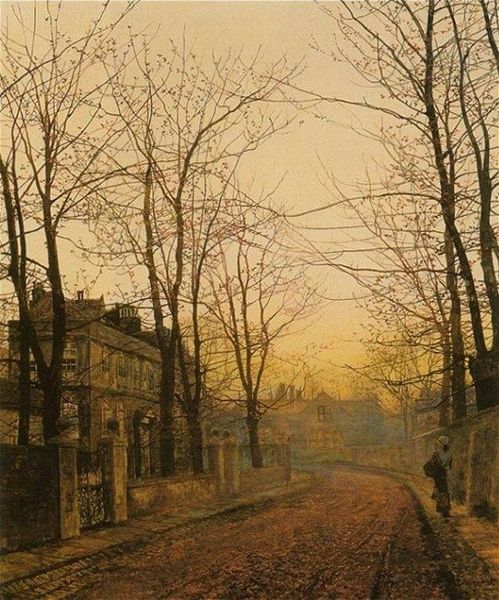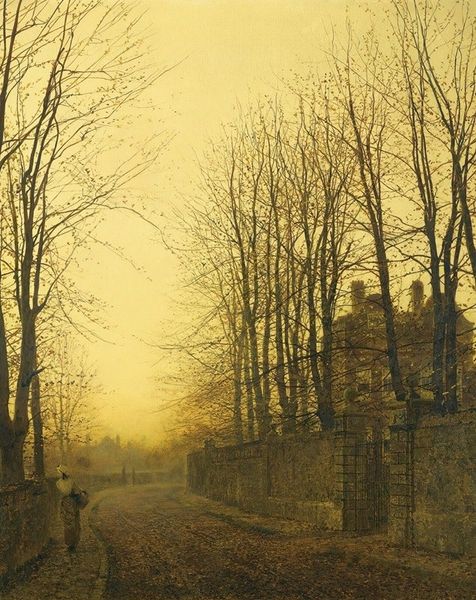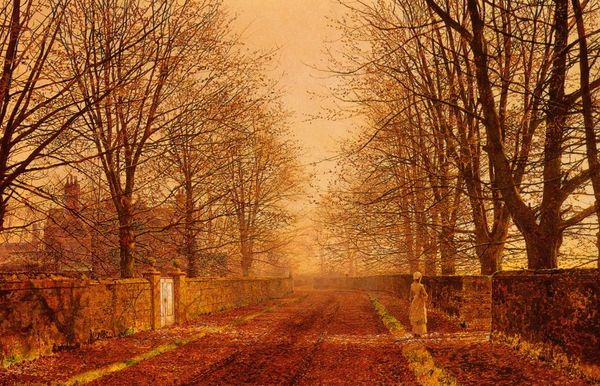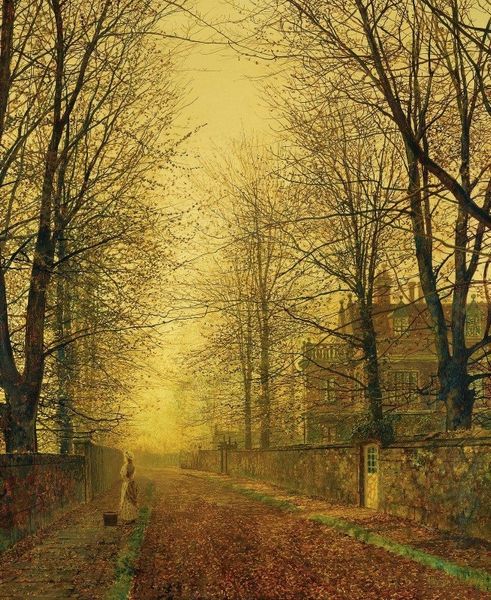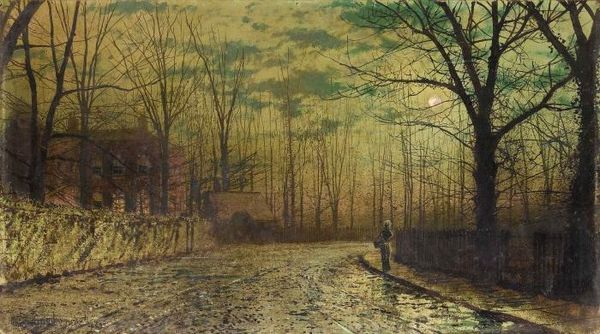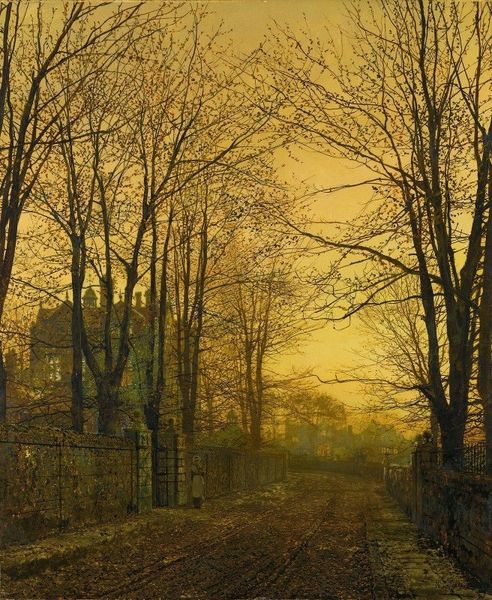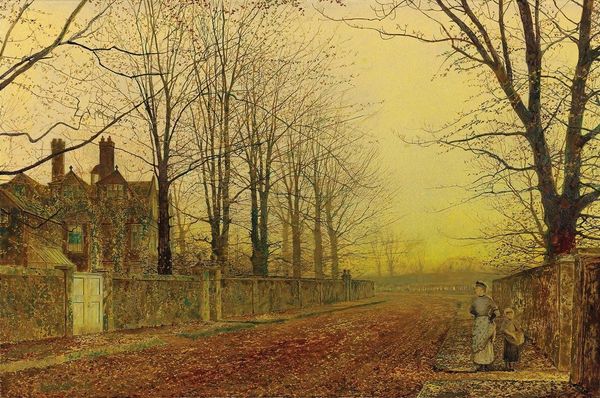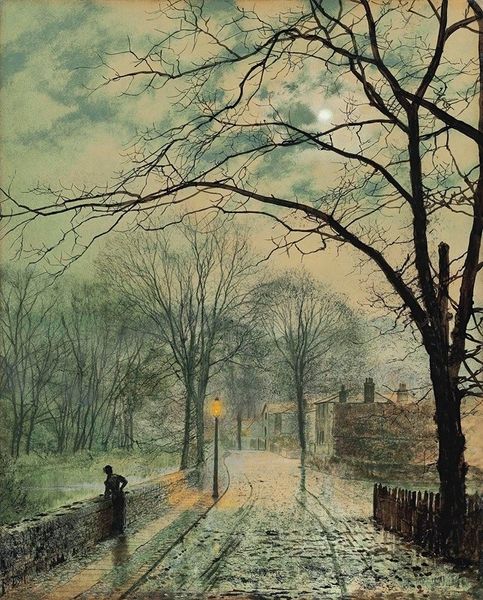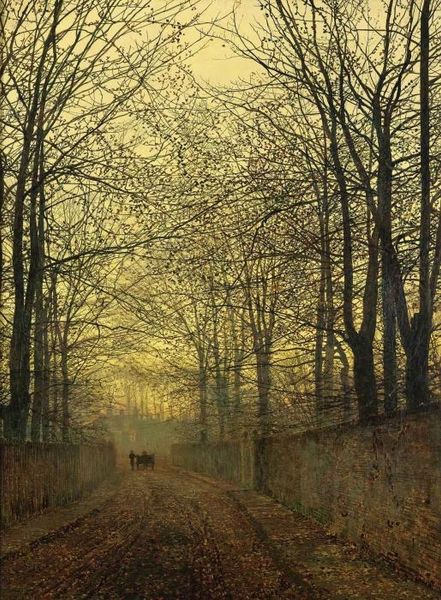
Dimensions: 31 x 45.5 cm
Copyright: Public domain
Editor: So this is "Golden Eve," painted by John Atkinson Grimshaw in 1892. It's an oil painting showing a lane receding into a misty distance, lined with bare trees. There's a kind of quiet melancholy to it, a very still feeling. What do you see in this piece? Curator: Well, first, I'm drawn to the very active role of industry at that time, and how urbanization and industrial development profoundly changed the landscape and impacted daily life. Grimshaw frequently depicted nocturnal scenes, often of urban settings illuminated by gaslight. Consider this painting as an early form of documenting modern life within Romanticism; his perspectives highlight how modernization shaped social experience, maybe even in uneasy or unsettling ways. Do you notice the composition, for example? Editor: I see the way the road and the walls on either side create a strong perspective, leading the eye into the fog. It gives depth, but also maybe suggests an unknowable future? Curator: Exactly. This very deliberate use of perspective and atmospheric effects were increasingly prevalent because photography and reproduction allowed it. Photography changed art, not always but, for example, it let art address the shifting relationship between the individual and a rapidly evolving urban environment. Also, how would it function publicly and privately for its intended audience? Editor: That's interesting, thinking about its purpose. Did it give a chance for people to explore a space that wasn’t easily explored? Curator: Yes, possibly an element of it! Grimshaw often catered to middle-class sensibilities and expectations by producing images with the kind of mystery with romantic undertones and realistic elements to depict urban and suburban environments. He invited viewers to reflect on their connection to space as Britain entered the Victorian era. I wonder how that shifted over time. Editor: It makes me think about how cityscapes today are still shaping us, even though the context is completely different. I have so much more to learn, but it seems so significant to consider history as part of art history, as if pieces are having discussions with each other over time. Curator: Indeed. Seeing art this way reveals its dynamism, its perpetual engagement with culture and the social environment of our time.
Comments
No comments
Be the first to comment and join the conversation on the ultimate creative platform.
